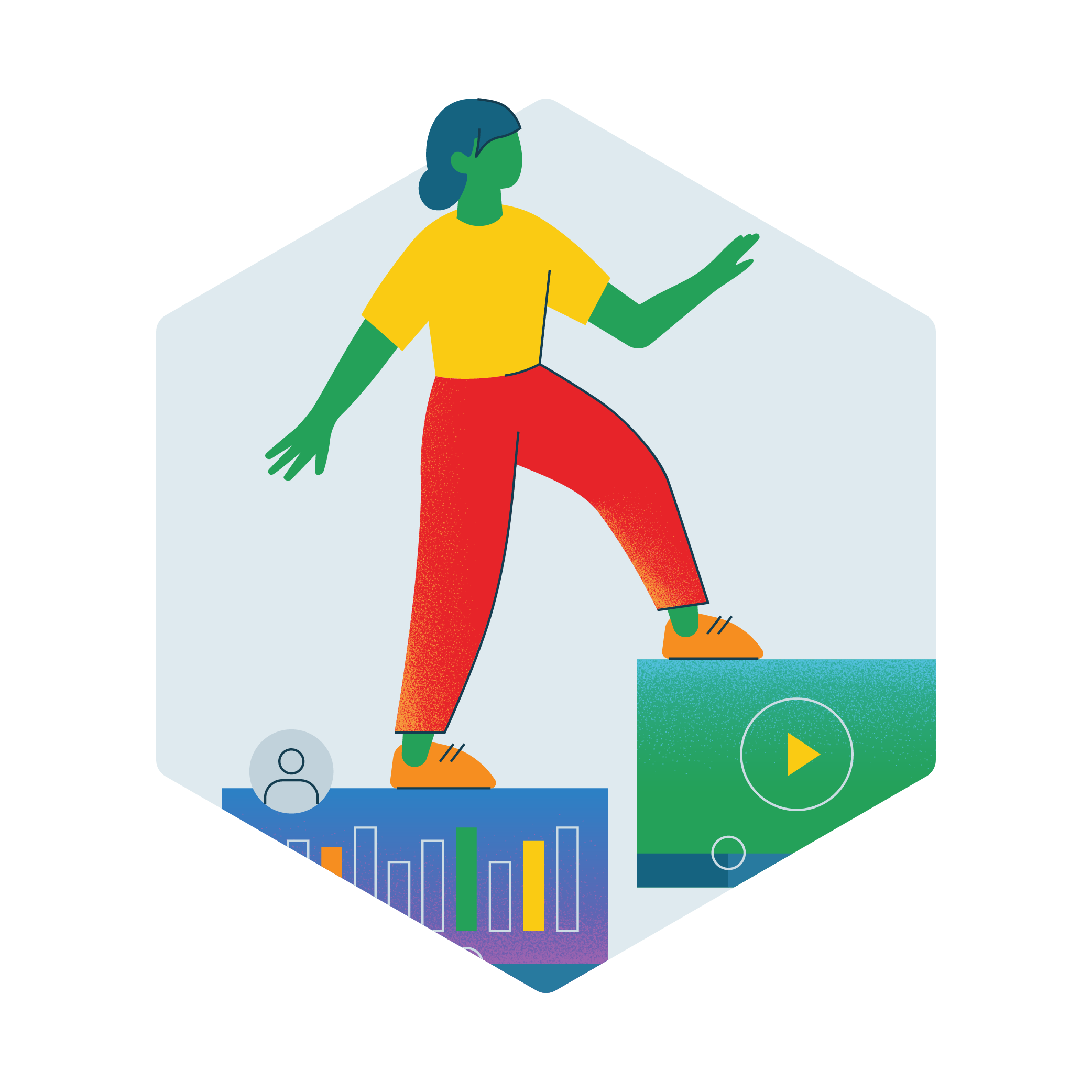Key Insights
VinUniversity developed an extensive ‘wish list’ for its first LMS, including the need for reliability, user attraction, ease of use, as well as learning and integration.
Adopting Canvas as its first LMS has given the university stability in its formative years.
Innovative fixes in its training approaches, including office hours, online courses, lunch-and-learn sessions, and ‘sandbox’ exploration sessions, have increased user engagement with the platform.
The Background
VinUniversity (colloquially known as VinUni) is Vietnam’s first private, not-for-profit university, with its inaugural graduation in August 2023. It offers degrees in the arts, sciences, business and management, engineering, computing, and health sciences.
The university’s Director of Teaching and Learning Excellence Center, Daniel Ruelle, says: “As a start-up private, not-for-profit university, we’re very young and very small, but have big ambitions to achieve global recognition within 30 years. We focus on the quality of education, not about generating profits.”
VinUni is on its way to punching above its weight, driven by its EXCEL values of empathy, exceptional capability, creativity, entrepreneurial mindset, and leadership spirit. In its first two years of operation, this Hanoi-based institution had already received five out of seven five-star ratings from the Quacquarelli Symonds world university rankings – the youngest Asia-Pacific university to do so.
What has helped is its long-time close partnerships with two US universities – Cornell University and the University of Pennsylvania. And there’s another reason that this case study details: a single source of truth for instruction, learning, engagement, and administration.
Ruelle says the platform had to be simple for faculty staff to figure out, yet powerful and robust enough for all different disciplines’ versions of how learning takes place best
Daniel Ruelle
Director of Teaching and Learning Excellence Center, VinUniversity
The Challenge
VinUni did its due diligence scouting for its first learning management system (LMS), needing one that was a good fit and would grow with the institution.
Ruelle says the platform had to be simple for "faculty staff to figure out", yet powerful and "robust enough to cater for varying approaches to learning in the different disciplines". The university also wanted to balance privacy and security with the flexibility for instructors to choose the tools that best fit their contexts.
These were VinUni’s must-have features and functions for an LMS:

User-friendly experience
Course content management
Collaboration tools
Assessment and feedback
Learning analytics
Accessibility via a mobile app online and offline
Wide availability and integration capabilities with external tools, and
Scalability.
Long before the campus was opened, VinUni narrowed the field for an LMS by first benchmarking the top 50 universities under 50 years of age, and then consulting with their US partner universities. Next, they identified the top LMS platform that aligned with current and future trends in education technology. They also tapped into VinUni’s LMS selection committee for their experiences in using Canvas at their previous institutions. Additionally, they quizzed providers about cloud-hosting locations, preferring a nearby location like Singapore for low latency.
Once the VinUni project team was ready to recommend an LMS, they secured leadership support by emphasizing the platform’s capacity to improve teaching, accessibility, and administration. They also ensured that the LMS aligned with VinUni’s strategic goals.
“Our expectations were around reliability, user attraction, ease of use, and for learning and integration,” says Ruelle.
The Solution
Ruelle explains why Canvas suited VinUni. “The main reason we went with Canvas was the student engagement aspect. What’s the point of creating beautiful content for your LMS if you can’t even get them there? It has to be engaging to provide a friendly, intuitive experience that makes them want to go to the LMS.”
The intuitive aspect matters. It means students “only need a brief orientation and onboarding, but after that [they] figure it out”, says Ruelle. This contrasts with open-source offerings. Canvas has integrated well at VinUni with third-party tools (LTIs) such as Zoom, Panopto, Respondus Lockdown Browser, Cidi Labs DesignPLUS/ReadyGO, and Blue Explorance.
Ruelle says the huge library of LTIs and the ease of installation has also been a positive experience to extend the use of Canvas, while keeping students in one central place with one single account.
Canvas also ticked the box for being mobile-friendly, adding to its usability.
“We’re finding the majority of students use the Canvas mobile app, so we had to ensure it had the same features and functions as the desktop version,” he says.
The main reason we went with Canvas was the student engagement aspect. What’s the point of creating beautiful content for your LMS if you can’t even get them there?
Besides being user and mobile-friendly, we had to think about the learning management system’s implementation. Everything hangs off the system’s reliability and, with Canvas, we know it is rich with apps to integrate into its system.
Vu Ngoc Khanh
Senior Educational Technology Officer, VinUniversity
The university’s Senior Educational Technology Officer, Vu Ngoc Khanh, offers a perspective that pans back to the bigger picture.
“Besides being user and mobile-friendly, we had to think about the learning management system’s implementation. Everything hangs off the system’s reliability and, with Canvas, we know it is rich with apps to integrate into its system. That’s something that faculty staff look for and can adapt to.”
VinUni has been finetuning the onboarding and training of staff and students in how to use Canvas.
“New staff who aren’t familiar with an LMS can easily see it as just being a file repository, so they have to be made aware of the possibilities,” says Ruelle.
“We have a lot of new people join us and add more courses as we expand, so there’s constant onboarding and training we have to do, particularly as faculty take advantage of more advanced features of Canvas.”
Initially, the university relied on only face-to-face training. They’re now taking more of a flipped approach so people can learn at their own pace to cover the basics.
Faculty come to face-to-face sessions to experiment in a [Canvas] sandbox. They do an extensive series of activities, so the instruction and exploration are embedded together.”
Canvas is still proving relevant despite the return to in person learning after the pandemic. About two-thirds of faculty members have “retained some of the better elements of online learning” in their face-to-face classes.
“Faculty members have become more comfortable trying new features. I’ll walk past a classroom and see online polling, and quizzes still happening. It shows staff have experimented with digital tools and they’re now integrated into their instruction, complementing it,” says Ruelle.
His team runs regular drop-in ‘office hours’ to answer questions from staff. Their instructional designer also “walks around and talks to faculty members”, plus there are opt-in lunch-and-learn sessions where faculty take the initiative to lead sessions for peers.
“Sometimes just seeing what others are doing in their classes can change their perceptions.”
For consistent course layout and content organization, VinUni uses blueprints. Cidi Labs tools help instructors design and customize their Canvas course further, but they still have a standardized look and feel across courses and departments. Students gave positive feedback about the improved navigation on course home pages.
The university has also found Canvas “surprisingly easy” to manage, audit, grant permissions for, streamline administrative tasks, and enhance overall system governance, says Ruelle.
He appreciates the Instructure team’s swift responses to VinUni’s information requests.
Ruelle adds that his institution draws on the extensive knowledge base of tutorial resources and the supportive
It’s nice to have this stability - we’d thought very carefully from the beginning and the LMS decision we’ve made has lived up to our expectations.
Daniel Ruelle
Director of Teaching and Learning Excellence Center, VinUniversity
Canvas Community to facilitate problem-solving and continuous learning. More than two million people using Canvas LMS across the globe are part of the online Canvas Community. It’s where educators can ask questions and receive answers from their peers or a Canvas expert, as well as learn about product updates, trending discussions, plus search posts.
Next on VinUni’s Canvas ‘to-do’ list are to:
Explore Admin Analytics on Canvas for more advanced and richer data insights and visualizations
Harness Canvas Credentials – digital badging – to have a wider reach to external learners
Continue experimenting with active learning pedagogies, ethical use of generative AI, and the latest edutech apps, and
Roll out tech-enhanced personalized learning paths to cater for students’ unique learning preferences.
Adopting Canvas as its first LMS has given VinUniversity stability in its formative years. The university’s Senior Educational Technology Officer, Vu Ngoc Khanh, says that having Canvas up and running early in the pandemic allowed the university to “adapt quickly and have a reliable system to keep teaching during COVID”.
So, while the university had smooth sailing through the pandemic, introducing a new LMS can have hiccups, says Ruelle.
“Going from one system to another happened twice to me elsewhere and it’s really disruptive to build up your habits only to then have to figure out different ways of working. Resoundingly, it helped that a lot of the university’s staff including me had used Canvas before in other institutions so were able to share insights. It’s nice to have this stability – we’d thought very carefully from the beginning and the LMS decision we’ve made has lived up to our expectations.”
And, extra kudos to Canvas in helping VinUni notch its QC star ratings, he says.
“We had to showcase our development of curricula and learning materials. Canvas played a big role in helping us earn the 5-star ratings in these teaching and academic development categories.”
Download Case Study
